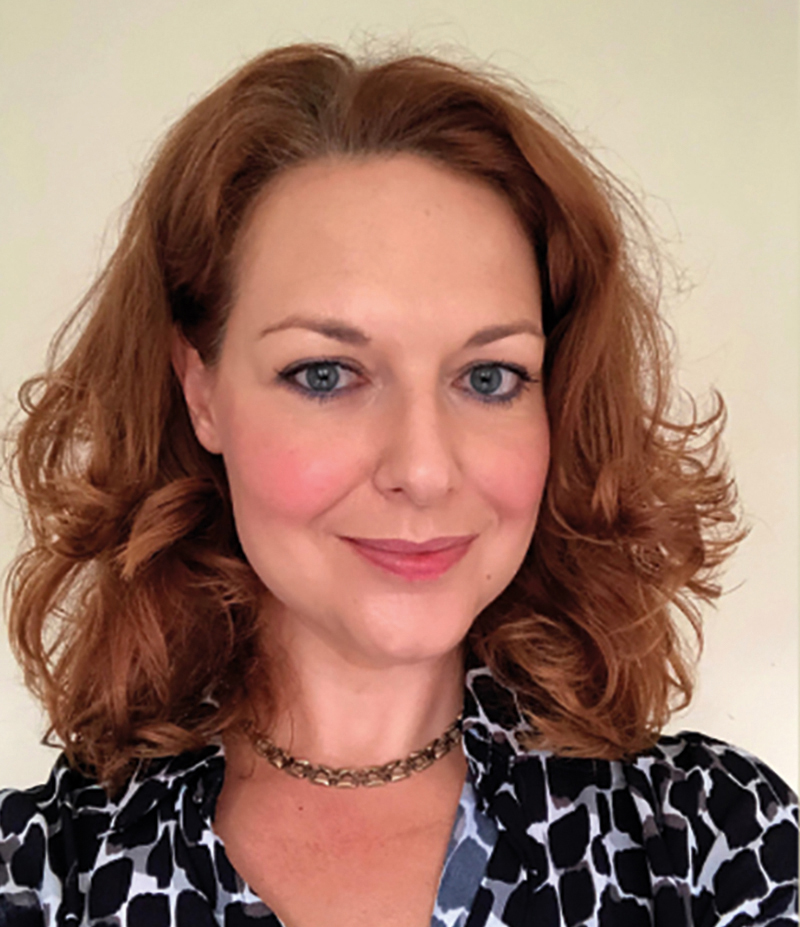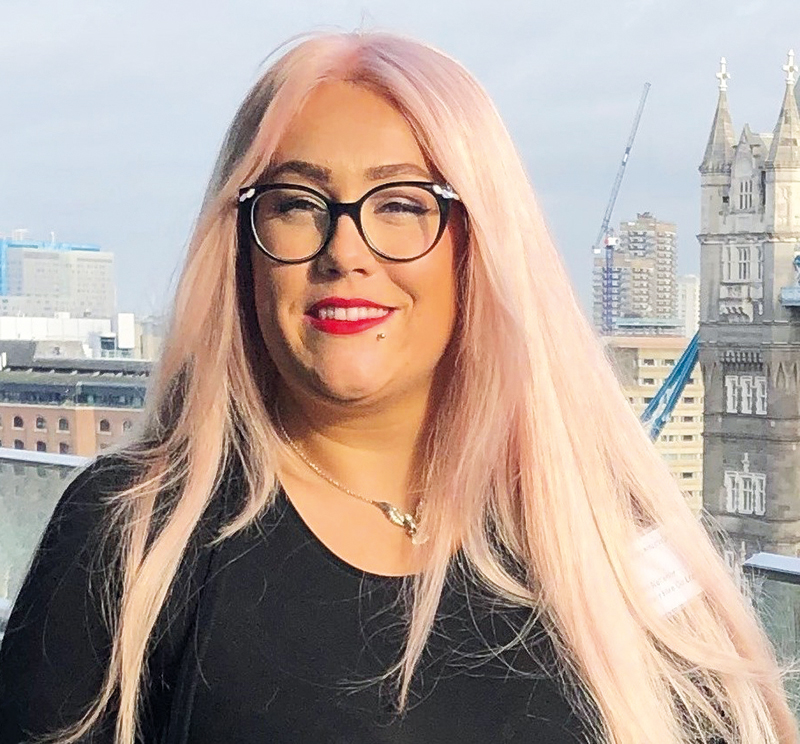
CIOB, CM and CIOB People have launched a new campaign to address the lack of inclusive PPE in construction. Nadine Buddoo and Cristina Lago brought together a panel of experts to hear their experiences of badly fitting PPE, why it is dangerous and what needs to change.
The current shortcomings in PPE provision are nothing new for many women working in construction. It is clear that the ‘pink it and shrink it’ strategy adopted by many suppliers is not an adequate approach to keeping the female workforce safe on site.
It is an issue that sadly struck a chord with all the attendees at a recent CIOB People round table, convened to explore the barriers – and opportunities – around providing PPE that fits everyone, regardless of shape or size.
According to Helen Gawor, director of strategy and innovation at ISG, there is a clear “lack of understanding” of the reasons why women need adequate PPE.

“It’s not just about aesthetics and comfort: it’s about safety. Unisex doesn’t suit the shapes and sizes that we are,” she said. “From my experience of working in a high-risk trade of working at height, where operatives have to wear harnesses, for example, I can’t find any analysis that looks at where those harnesses sit on a woman’s body or what the impact would be if they were involved in a fall.”
Gawor added: “It is surprising that in high-risk trades, where there are very few women and most businesses don’t have inclusive PPE available, there is an assumption that women just require smaller sizes. Once I enquired about women’s PPE and I was sent a brochure with PPE just with smaller dimensions – which is hilarious considering that I’m 5ft 11!”
Unisex PPE
This was a sentiment shared by Sophie Perkins, senior chartered building surveyor at Atkins, who admitted she had accepted unisex PPE for years, despite it typically being tailored to fit a male body. She noted, however, that the concern around safety is just one of the issues arising from inadequate PPE.
“Although safety is paramount and I felt incredibly unsafe wearing PPE that didn’t fit me and didn’t allow me to perform my job safely, the shortcomings go beyond safety,” she said. “I nearly left the industry because I felt like I didn’t fit in. I don’t mind the colour pink, but it doesn’t help when someone patronisingly hands you pink PPE and says: ‘This is for you – there you go.’

“Your clothing is a very physical thing and it was the biggest reason why I thought I didn’t belong here. I had to act like a man with that footwear and clothing. I wasn’t succeeding at my job until I decided to do something quite radical and I started working with manufacturers to develop PPE for women, as well as other inclusivity categories.”
Perkins highlighted the need for protective clothing to accommodate an increasingly diverse workforce including, for example, different ethnicities, religions and body types.
There was agreement from all attendees that the provision of more inclusive PPE would also be beneficial to men working in the industry.
Stephanie Eynon, head of standards-makers engagement and inclusion at BSI, added: “There are lots of men that would love a little bit of stretch: men don’t come in one size either. If we bring a gender lens, it will make standards better for everyone, not just women. It will enable a greater diversity of men to work safely and comfortably, as well as more women.”
Health and wellbeing
While there are examples of gender sensitive and inclusive PPE in the market, there were concerns that many construction companies use legacy suppliers that are not driving innovation through their stock.
Following years of experience on major projects and with tier 1 contractors, Katie Kelleher, technical and development officer at the Construction Plant-hire Association (CPA) and former crane operator, shared her dire experience of ill-fitting PPE and the impact this can have on self-confidence.

“It all starts when you go on site and they ask you what size of PPE you need but once you slide it on, it doesn’t fit. It’s an embarrassing situation because you have a bloke in front of you and you feel judged. You end up with some oversized high-vis trousers bunched up around your shoes at the bottom and a jacket hunching around your neck and floppy arms hanging over your hands. How can I operate a crane in a jacket with sleeves that are absolutely massive?”
Kelleher explained that as well as looking “like an idiot”, there are also some serious health implications. On one occasion she was given boots that caused a condition called plantar fasciitis, commonly referred to as a policeman’s heel. “Although the size was right, the heels were a problem,” she added. “I’ve just never experienced good PPE.”
Katherine Evans, founder of support network Bold as Brass, had similar concerns about the dearth of inclusive PPE and the effect this can have on workers’ health and wellbeing. “I don’t think it’s because companies are not trying. Instead, I think it’s a block in lots of people’s minds that don’t understand what the problem is and who don’t get what’s the difference between a man’s gloves and a woman’s gloves, or the differences between the shapes of shoes and sizes of feet,” she said.
Culture shift
Responding to the need for change, Evans created Bold as Brass – a women’s network championing equity across the industry. While groups like this can provide useful resources and signposts to inclusive PPE, Evans believes a broader change in culture is needed across the industry.

“This is something a lot of people are struggling with because they have no leg to stand on. When it comes to fighting for what they need… women and others who need different PPE source it themselves and then expense it back,” she said.
Evans added that at the heart of the issue is the purchasing department in big companies, which is often “run by men who don’t see a problem here”. “And even if you have a really good procurement department that has an approved supplier list with women’s PPE on it, you have managers standing in the way who can be too lazy to find out how to do something different.”
Eynon shared this concern and added that the entire process should be reviewed. “Who’s purchasing this PPE? What do they know about the needs of the people whom they are purchasing for? What do they know about the suppliers? Do they have enough knowledge about the suppliers available on the market and the range of PPE that’s on offer? All these questions keep coming up.”
The discussion turned to the role inclusive PPE can play in attracting and retaining a diverse workforce.
“Women feel less comfortable getting into the industry because they feel they don’t fit. And companies do not always want to employ more women because they think it will cost them more money and because they think it dangerous to have women on site because statistics might show that they are more likely to have accidents – probably due to PPE that doesn’t fit properly,” added Eynon.
“So what evidence do we need? What different story do we need to tell to really create structural and systemic change?”

Change makers
CIOB president Sandi Rhys Jones agreed that systemic change is needed in traditional approaches to purchasing PPE. However, she noted: “You can only go so far with the establishment. Change is driven by individuals who say that they can’t put up with this anymore.
“Women at this round table have demonstrated [how they have tackled this challenge by] going down, round and under – that’s how change happens.”
Rhys Jones also highlighted the importance of finding male allies. She said: “One of the people I spoke to about this PPE campaign was a man who said he got fed up with his purchasing department and at his own time and expense he would drive to alternative suppliers.”
To support a real step-change in the approach to PPE, there was consensus that policy and legislation must play a significant role.

“We have to start with legislation, whereby you have to provide gender-appropriate PPE for your workforce,” insisted Rachel Tomkins, head of assurance, security and facilities at Tideway London. “When we are talking about quality, there isn’t necessarily a legal standpoint that you are protected by. But when you are talking about safety, you are required to be safe to do your work.”
Rhys Jones outlined CIOB’s commitment to making a difference in this area and suggested working in partnership with BSI to produce a guidance document to drive the provision of more inclusive PPE.
“These are people’s issues,” she added. “It’s particularly important for women, but there are men [who are important to this change] as well. We don’t want to be exclusive – we want to be inclusive.”
Show your support for #PPEthatfits
We want to hear from CM readers about your experiences with PPE – whether it’s PPE that doesn’t fit properly or innovative manufacturers which are producing inclusive PPE that is not just designed for men.
Get in touch with [email protected] or [email protected]. Alternatively, share your stories on social media and support the campaign, using the hashtag #PPEthatfits.
Comments
Comments are closed.












I well remember a CIOB Lancashire & Cumbria Centre evening visit to the ‘Bay Gateway’ (link from the M6 to Heysham dock), where Barbara Entwistle and myself struggled into oversized, too long, but too tight in all the wrong places PPE. After a good half hour and with the help of several people, we were ready to go. ‘Well, at the least gloves fit’, said Barbara. Sums it up really!
Oh my word Jane, that brings back some memories, I had more skins on than an onion, it was a boiling hot night, and I was already in the middle of going through that strange experience of the dreaded menopause. I had to lie down at one point as I could go on no further… And the crutch of the trousers was down to my knees. However, the hat, glasses and gloves did fit.